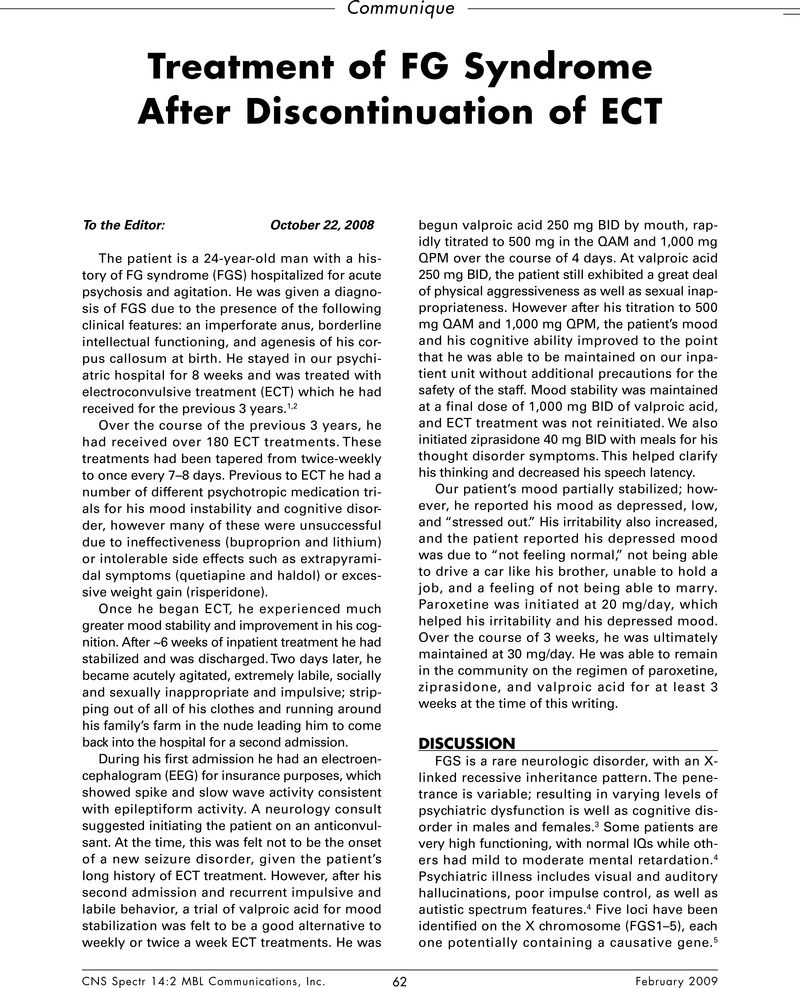Crossref Citations
This article has been cited by the following publications. This list is generated based on data provided by Crossref.
Palm, Ulrich
Strauss, Philipp
Born, Christoph
and
Pogarell, Oliver
2011.
Electroconvulsive Therapy and Corpus Callosum Aplasia: A 3-Year Followup.
Case Reports in Psychiatry,
Vol. 2011,
Issue. ,
p.
1.





